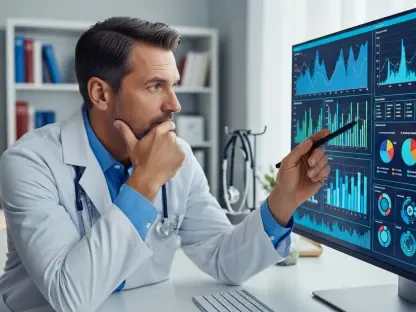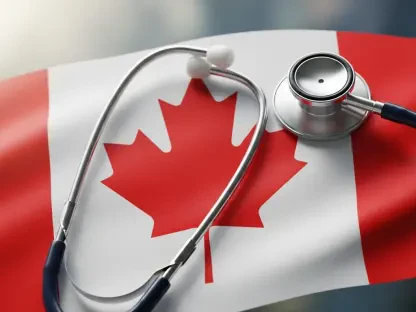I’m thrilled to sit down with Faisal Zain, a renowned expert in healthcare technology with a deep background in medical device manufacturing for diagnostics and treatment. With years of experience driving innovation, Faisal has a unique perspective on how digital transformation is reshaping patient care. In this conversation, we’ll explore the inspiring journey of a hospital in Indonesia that revolutionized access to services through a mobile app, diving into the motivations behind such innovations, the integration of technology with medical records, the impact on patient experience, and the recognition earned for these groundbreaking efforts. Let’s get started.
Can you walk us through what might have driven a hospital like SMC Telogorejo to launch a mobile app like mySMC back in 2017?
Absolutely. Around that time, many hospitals, especially in regions like Southeast Asia, were grappling with long wait times and inefficient access to services. Patients often faced hours of waiting just to book an appointment or get basic information. I believe the push for something like mySMC stemmed from a need to tackle these pain points head-on. A mobile app offered a way to bypass traditional bottlenecks—think long lines at registration desks or phone systems that couldn’t handle the volume. It’s likely they saw a mobile solution as the most accessible and scalable option compared to, say, expanding physical infrastructure or hiring more staff. Plus, with smartphone usage surging globally by 2017, it made sense to meet patients where they already were—on their devices.
How do you think the team prioritized the key features for an app like mySMC, and what might have influenced those decisions?
When designing an app like this, the focus is usually on solving the most immediate frustrations for patients. Features like appointment management and access to health records are often top priorities because they directly address time-wasting steps and empower patients with information. I’d imagine the team looked at data on patient complaints or conducted surveys to pinpoint what mattered most. For instance, if people were missing appointments due to lack of reminders, real-time notifications would be a no-brainer. Patient input likely played a big role too—early feedback could have highlighted the need for seamless payment options or a user-friendly interface, ensuring the app wasn’t just functional but also intuitive.
What challenges do you foresee in integrating a mobile app with an Electronic Medical Record system, as SMC Telogorejo did?
Integrating a mobile app with an EMR system is no small feat. One of the biggest hurdles is ensuring data security and privacy—health records are incredibly sensitive, and any breach could be catastrophic. Then there’s the technical challenge of syncing two systems that might not have been designed to ‘talk’ to each other. Legacy EMR systems often use outdated protocols, so developers have to build custom bridges, which takes time and expertise. I’d guess there were also workflow issues—getting staff accustomed to a new digital pipeline while maintaining accuracy in patient data. It’s a complex process that could take months, if not years, to refine, depending on the hospital’s resources and vendor support.
The hospital managed to cut consultation wait times dramatically from over 4 hours to about 1.5 hours. How do you think this technology made such a significant impact?
That kind of reduction is a game-changer, and it likely comes down to streamlining multiple touchpoints in the patient journey. With an app integrated into the EMR, patients can book appointments online, reducing the chaos at front desks. Doctors and staff can access updated schedules and patient info instantly, cutting down on manual coordination. I suspect they also eliminated bottlenecks like paper-based check-ins or redundant data entry. Staff training would have been crucial—without buy-in from the team to adopt these tools effectively, the tech alone wouldn’t have worked. It’s a perfect example of how digital tools, when paired with process changes, can transform efficiency.
Patient satisfaction, measured by a Net Promoter Score over 90%, improved significantly. What methods do you think hospitals use to gauge such feedback, and how might digital tools influence those perceptions?
Hospitals often use surveys—either digital or in-person—to capture patient sentiment, focusing on metrics like Net Promoter Score, which asks how likely someone is to recommend the service. Before digital tools, feedback might have been collected via paper forms or follow-up calls, but apps make it easier with instant pop-up surveys post-visit. I think patients at SMC Telogorejo likely appreciated the control and transparency the app provided—being able to see their health records or get updates in real time builds trust. Surprises often come from how much patients value small conveniences, like not having to repeat their medical history every visit. Digital tools can turn frustration into loyalty when done right.
Digital engagement skyrocketed across platforms like the app, onsite touchpoints, and the hospital website. What strategies do you believe could have fueled this surge in usage?
A jump like that usually comes from a mix of awareness and accessibility. Hospitals might roll out campaigns—think social media ads or in-clinic posters—to educate patients on how to use these tools. Incentives, like discounts for booking via the app, can also drive adoption. For less tech-savvy folks, especially older patients, I’d bet they offered hands-on support, maybe through help desks or tutorials at onsite digital corners. It’s critical to ensure no one feels excluded, so balancing high-tech solutions with low-tech assistance is key. Word of mouth likely helped too—when patients see others benefiting, they’re more inclined to try it themselves.
The mySMC app was recognized as a best practice by HIMSS for simplifying the patient journey. How do you think such recognition impacts a hospital’s approach to digital transformation?
Recognition from a body like HIMSS is a massive validation—it’s like a stamp of approval that tells the team they’re on the right track. It boosts morale and often secures buy-in from stakeholders for further investment in tech. More importantly, the validation process itself, especially through frameworks like the EMR Adoption Model, provides a roadmap. It helps hospitals identify gaps and prioritize upgrades, aligning with global standards. I think it also pushes teams to think bigger—once you’re recognized, there’s motivation to aim for the next level, like expanding features or interoperability. It’s a catalyst for continuous improvement.
Looking ahead, what is your forecast for the role of mobile apps and digital tools in shaping the future of patient care?
I’m incredibly optimistic about this space. Mobile apps and digital tools are set to become the backbone of healthcare delivery in the coming years. We’ll see more advanced features like teleconsultation and AI-driven chatbots becoming standard, making care even more accessible, especially in remote areas. Interoperability will be the next frontier—ensuring apps and systems can seamlessly share data across hospitals and even countries. I also expect a stronger focus on personalization, where apps use data to tailor health advice or reminders to individual needs. The challenge will be balancing innovation with equity, ensuring everyone, regardless of tech access, can benefit. It’s an exciting time, and I think we’re just scratching the surface of what’s possible.









